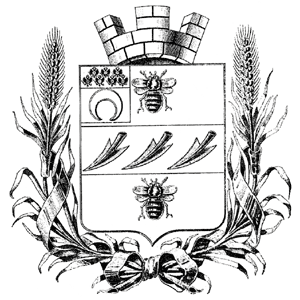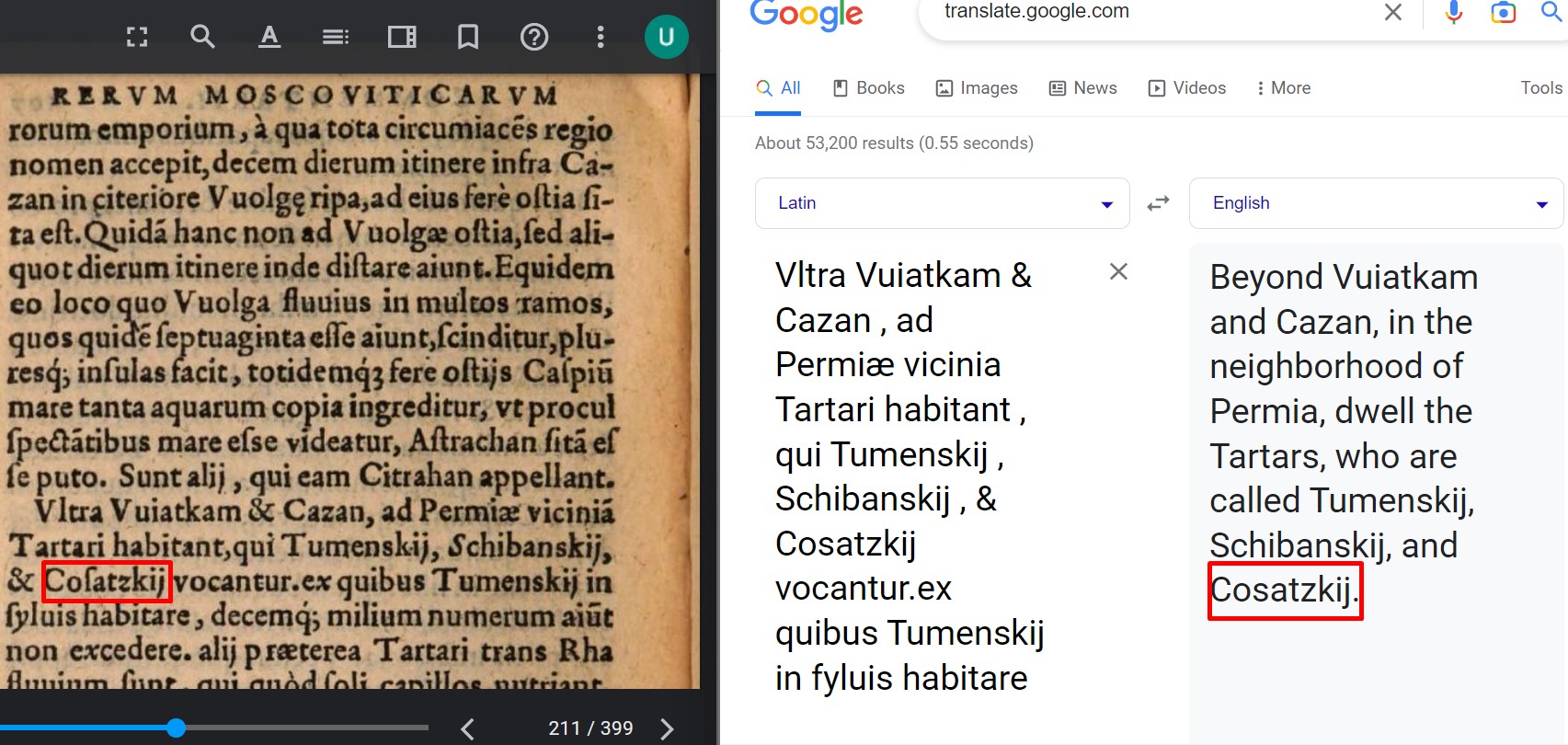|
Akmolinsk Oblast (Russian Empire)
Akmolinsk Oblast was an oblast (province) of the Russian Empire. It roughly corresponded to most of present-day northern Kazakhstan and the southern part of Omsk Oblast in Russia. It was formerly part of Kazakh khanate. It was created after the division of the Oblast of Siberia Kyrgyz into the oblasts Aqmola and Semirechye on 21 October 1868. Its center was Omsk and consisted of uezds Akmolinsk, Atbasar, Kokchetav, Omsk and Petropavlovsk. It bordered Tobolsk Governorate to the north, Semipalatinsk Oblast to the east, Semirechye Oblast to the northeast, Syr-Darya Oblast to the south, Turgay Oblast to the southwest and Orenburg Governorate to the northwest. Demographics As of 1897, 682,608 people populated the oblast. Kazakhs constituted the majority of the population. Significant minorities consisted of Russians and Ukrainians. Total Turkic speaking were 438,889 (64.2%). Ethnic groups in 1897 After the defeat of the White Army in the Russian Civil War, it was renamed as Omsk G ... [...More Info...] [...Related Items...] OR: [Wikipedia] [Google] [Baidu] |
Oblast
An oblast (; ; Cyrillic (in most languages, including Russian and Ukrainian): , Bulgarian: ) is a type of administrative division of Belarus, Bulgaria, Kazakhstan, Kyrgyzstan, Russia, and Ukraine, as well as the Soviet Union and the Kingdom of Yugoslavia. Official terms in successor states of the Soviet Union differ, but some still use a cognate of the Russian term, e.g., ''vobłasć'' (''voblasts'', ''voblasts'', official orthography: , Taraškievica: , ) is used for regions of Belarus, ' (plural: ') for regions of Kazakhstan, and ''oblusu'' (') for regions of Kyrgyzstan. The term is often translated as "area", "zone", "province" or "region". The last translation may lead to confusion, because "raion" may be used for other kinds of administrative division, which may be translated as "region", "district" or "county" depending on the context. Unlike "province", translations as "area", "zone", and "region" may lead to confusion because they have very common meanings other t ... [...More Info...] [...Related Items...] OR: [Wikipedia] [Google] [Baidu] |
Semirechye Oblast
The Semirechyenskaya Oblast (russian: Семиреченская область) was an oblast (province) of the Russian Empire. It corresponded approximately to most of present-day southeastern Kazakhstan and northeastern Kyrgyzstan. It was created out of the territories of the northern part of the Khanate of Kokand that had been part of the Kazakh Khanate. The name "Semirechye" ("Seven Rivers") itself is the direct Russian translation of the historical region of Jetysu. Its site of government was Verniy (now named Almaty). The Russian government seized the Semirechyenskaya region in 1854, and created the province the same year. It was administered as part of Governor-Generalship of the Steppes (before 1882 it was known as the Governor-Generalship of the Western Siberia) between 1854 and 1867 and again between 1882 and 1899, and part of Russian Turkistan between 1867 and 1882 and again between 1899 and 1917. Russian control of the region was recognized by the Treaty of Saint Peter ... [...More Info...] [...Related Items...] OR: [Wikipedia] [Google] [Baidu] |
Akmolinsk Oblast (Russian Empire)
Akmolinsk Oblast was an oblast (province) of the Russian Empire. It roughly corresponded to most of present-day northern Kazakhstan and the southern part of Omsk Oblast in Russia. It was formerly part of Kazakh khanate. It was created after the division of the Oblast of Siberia Kyrgyz into the oblasts Aqmola and Semirechye on 21 October 1868. Its center was Omsk and consisted of uezds Akmolinsk, Atbasar, Kokchetav, Omsk and Petropavlovsk. It bordered Tobolsk Governorate to the north, Semipalatinsk Oblast to the east, Semirechye Oblast to the northeast, Syr-Darya Oblast to the south, Turgay Oblast to the southwest and Orenburg Governorate to the northwest. Demographics As of 1897, 682,608 people populated the oblast. Kazakhs constituted the majority of the population. Significant minorities consisted of Russians and Ukrainians. Total Turkic speaking were 438,889 (64.2%). Ethnic groups in 1897 After the defeat of the White Army in the Russian Civil War, it was renamed as Omsk G ... [...More Info...] [...Related Items...] OR: [Wikipedia] [Google] [Baidu] |
Omsk Governorate
Omsk (; rus, Омск, p=omsk) is the administrative center and largest city of Omsk Oblast, Russia. It is situated in southwestern Siberia, and has a population of over 1.1 million. Omsk is the third largest city in Siberia after Novosibirsk and Krasnoyarsk, and the twelfth-largest city in Russia. It is an essential transport node, serving as a train station for the Trans-Siberian Railway and as a staging post for the Irtysh River. During the Imperial era, Omsk was the seat of the Governor General of Western Siberia and, later, of the Governor General of the Steppes. For a brief period during the Russian Civil War in 1918–1920, it served as the capital of the anti-Bolshevik Russian State and held the imperial gold reserves. Omsk serves as the episcopal see of the bishop of Omsk and Tara, as well as the administrative seat of the Imam of Siberia. The mayor is Sergey Shelest. Etymology The city of Omsk is named after the Om river. This hydronym in the dialect of Baraba Ta ... [...More Info...] [...Related Items...] OR: [Wikipedia] [Google] [Baidu] |
Russian Civil War
, date = October Revolution, 7 November 1917 – Yakut revolt, 16 June 1923{{Efn, The main phase ended on 25 October 1922. Revolt against the Bolsheviks continued Basmachi movement, in Central Asia and Tungus Republic, the Far East through the 1920s and 1930s.{{cite book, last=Mawdsley, first=Evan, title=The Russian Civil War, location=New York, publisher=Pegasus Books, year=2007, isbn=9781681770093, url=https://archive.org/details/russiancivilwar00evan, url-access=registration{{rp, 3,230(5 years, 7 months and 9 days) {{Collapsible list , bullets = yes , title = Peace treaties , Treaty of Brest-LitovskSigned 3 March 1918({{Age in years, months, weeks and days, month1=11, day1=7, year1=1917, month2=3, day2=3, year2=1918) , Treaty of Tartu (Russian–Estonian)Signed 2 February 1920({{Age in years, months, weeks and days, month1=11, day1=7, year1=1917, month2=2, day2=2, year2=1920) , Soviet–Lithuanian Peace TreatySigned 12 July 1920({{Age in years, months, weeks and da ... [...More Info...] [...Related Items...] OR: [Wikipedia] [Google] [Baidu] |
Tatars
The Tatars ()Tatar in the Collins English Dictionary is an umbrella term for different Turkic ethnic groups bearing the name "Tatar". Initially, the ethnonym ''Tatar'' possibly referred to the . That confederation was eventually incorporated into the when unified the various steppe tr ... [...More Info...] [...Related Items...] OR: [Wikipedia] [Google] [Baidu] |
Ukrainians
Ukrainians ( uk, Українці, Ukraintsi, ) are an East Slavs, East Slavic ethnic group native to Ukraine. They are the seventh-largest nation in Europe. The native language of the Ukrainians is Ukrainian language, Ukrainian. The majority of Ukrainians are Eastern Orthodox Church, Eastern Orthodox Christians. While under the Polish–Lithuanian Commonwealth, the Austrian Empire, and then Austria-Hungary, the East Slavic population who lived in the territories of modern-day Ukraine were historically known as Ruthenians, referring to the territory of Ruthenia, and to distinguish them with the Ukrainians living under the Russian Empire, who were known as Little Russians, named after the territory of Little Russia. Cossacks#Ukrainian Cossacks, Cossack heritage is especially emphasized, for example in the Shche ne vmerla Ukraina, Ukrainian national anthem. Ethnonym The ethnonym ''Ukrainians'' came into wide use only in the 20th century after the territory of Ukraine obtained ... [...More Info...] [...Related Items...] OR: [Wikipedia] [Google] [Baidu] |
Russians
, native_name_lang = ru , image = , caption = , population = , popplace = 118 million Russians in the Russian Federation (2002 ''Winkler Prins'' estimate) , region1 = , pop1 = approx. 7,500,000 (including Russian Jews and Russian Germans) , ref1 = , region2 = , pop2 = 7,170,000 (2018) ''including Crimea'' , ref2 = , region3 = , pop3 = 3,512,925 (2020) , ref3 = , region4 = , pop4 = 3,072,756 (2009)(including Russian Jews and Russian Germans) , ref4 = , region5 = , pop5 = 1,800,000 (2010)(Russian ancestry and Russian Germans and Jews) , ref5 = 35,000 (2018)(born in Russia) , region6 = , pop6 = 938,500 (2011)(including Russian Jews) , ref6 = , region7 = , pop7 = 809,530 (2019) , ref7 ... [...More Info...] [...Related Items...] OR: [Wikipedia] [Google] [Baidu] |
Kazakhs
The Kazakhs (also spelled Qazaqs; Kazakh: , , , , , ; the English name is transliterated from Russian; russian: казахи) are a Turkic-speaking ethnic group native to northern parts of Central Asia, chiefly Kazakhstan, but also parts of northern Uzbekistan and the border regions of Russia, as well as Northwestern China (specifically Ili Kazakh Autonomous Prefecture) and Mongolia ( Bayan-Ölgii Province). The Kazakhs are descendants of the ancient Turkic Kipchak tribes and the medieval Mongolic tribes, and generally classified as Turco-Mongol cultural group. Kazakh identity is of medieval origin and was strongly shaped by the foundation of the Kazakh Khanate between 1456 and 1465, when following disintegration of the Golden Horde, several tribes under the rule of the sultans Janibek and Kerei departed from the Khanate of Abu'l-Khayr Khan in hopes of forming a powerful khanate of their own. ''Kazakh'' is used to refer to ethnic Kazakhs, while the term ''Kazakhstani'' ... [...More Info...] [...Related Items...] OR: [Wikipedia] [Google] [Baidu] |
Orenburg Governorate
Orenburg Governorate (russian: Оренбургская губерния) was an administrative division (a '' guberniya'') of the Russian Empire with the center in the city of Orenburg, Ufa (1802-1865). The governorate was created in 1744 from the lands annexed from Siberian and Astrakhan Governorates. In 1782, the governorate, along with of were transformed into Ufa Viceroyalty, which was divided into Ufa and Orenburg Oblasts. In 1796, Ufa Viceroyalty was renamed Orenburg Governorate, and in 1865 it was split in two—a smaller Orenburg Governorate, and Ufa Governorate. In 1919, Chelyabinsk Governorate was split off from Orenburg Governorate, and in 1928 the governorate was merged into a newly created Middle Volga Oblast. Administrative division After the creation of Ufa Governorate in 1865, Orenburg Governorate consisted of the following uyezds (administrative centres in parentheses): * Verkhneuralsky Uyezd (Verkhneuralsk) * Orenburgsky Uyezd ( Orenburg) * Orsky Uy ... [...More Info...] [...Related Items...] OR: [Wikipedia] [Google] [Baidu] |
Turgay Oblast (Russian Empire)
Turgai (also spelled Turgay or Turgaj) was an oblast (province) in Imperial Russia, established on October 21, 1868. It was located in the central part of present-day Kazakhstan. Its land area was . The site of administration was located in Orenburg, outside the borders of the oblast, since there was no town within it suitable for accommodation of the administration. Governors The chief authority of the Oblast was a military governor. The military governors of Turgay Oblast were: * 1869-1877 Lev Fyodorovich Balluzek (Louis Heinrich von Balluseck); * 1877-1878 Alexander Konstantinovich Geynts (Heinz); * 1878-1883 Alexander Petrovich Konstantinovich; * 1883-1887 Alexander Petrovich Protsenko; * 1887-1899 Yakov Feodorovich Barabash; * 1900-1908 Asinkrit Asinkritovich Lomachevsky; * 1908-1910 Ivan Mikhaylovich Strakhovsky; * 1910-1917 Mikhail Mikhaylovich Eversman. Demographics As of 1897, 453,416 people populated the oblast. Kazakhs constituted the majority of the population. Sig ... [...More Info...] [...Related Items...] OR: [Wikipedia] [Google] [Baidu] |
Syr-Darya Oblast
Syr-Darya Oblast (russian: Сырдарьинская область) was one of the oblasts of the Russian Empire, a part of Russian Turkestan. Its center was Tashkent. History The Syr-Darya Oblast was founded after annexing the northwestern part of Khanate of Kokand, Chimkent ( established in 1709, declaring independence from Emirate of Bukhara) and the northwestern part of Khanate of Khiva (for Amu Darya Okrug at present Karakalpakstan) in 1867. Khiva was Khivan campaign of 1873, conquered by the Russians in 1873 who made Sayyid Muhammad Rahim Bahadur Khan II vassal ruler of the region. From 1905, Pan-Turkism, Pan-Turkist ideologues like Ismail Gasprinski aimed to bridge differences among the peoples who spoke Turkic languages, uniting them into one government. This idea was supported by Vladimir Lenin, and on April 30, 1918, with support of the Bolshevik, Bolsheviks in Tashkent, the Turkestan ASSR, Turkestan Autonomous Soviet Socialist Republic (ASSR) was established with Ta ... [...More Info...] [...Related Items...] OR: [Wikipedia] [Google] [Baidu] |




